Tour of historic sites in northern England
Using Hexham as a base the tour embraced a Roman era theme with a diversion down to Durham to visit the magnificent Norman/Romanesque Cathedral.
Brunton Turret
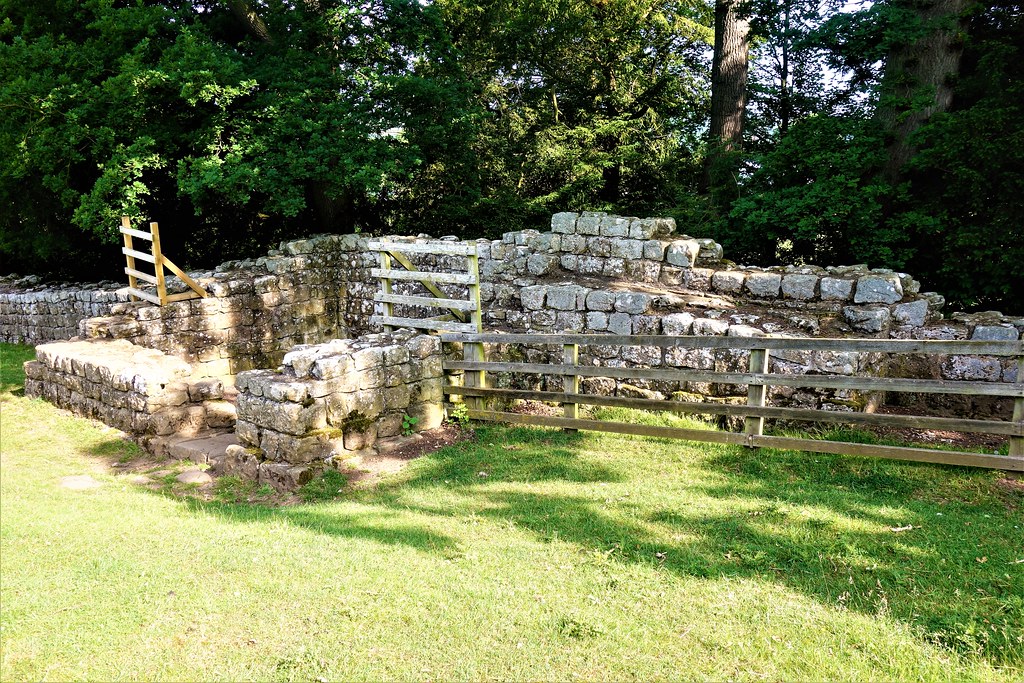 Brunton Turret
Brunton TurretFirst we visited Brunton Turret which is one of the best preserved turrets on the line of Hadrian's Wall, with a stretch of wall 70 yards long.
A turret was a small watch tower, incorporated into the curtain wall of Hadrian's Wall. The turrets were normally spaced at intervals of one-third of a Roman mile (equivalent to 495 metres (541 yd)) between milecastles, giving two Turrets between each milecastle.
Brunton Turret was built by men of the Twentieth Legion.
Chesters Roman Fort
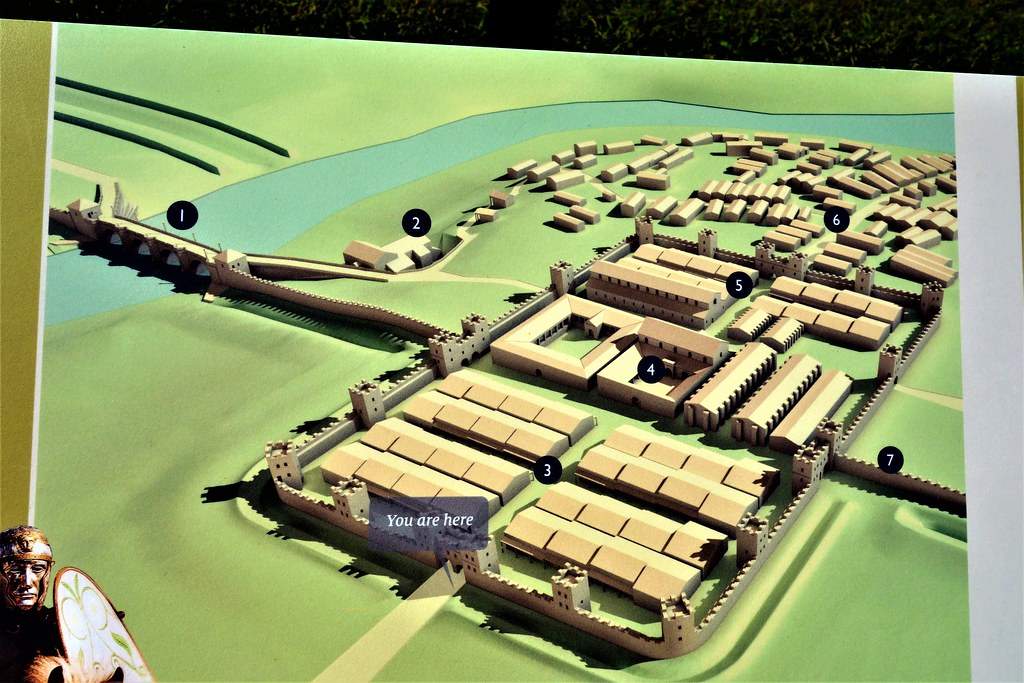 Chesters Roman Fort
Chesters Roman FortNext to Chesters Roman Fort (Cilurnum) on Hadrian's Wall This fort is located about 36 miles east of Carlisle.
Chesters was one of a number of principal forts built to enhance defences of the Wall and provide a base for offensive, northward strikes into enemy territory to the north. The Wall straddled the fort with three of the fort’s gates facing north.
The state of preservation and on-site museum is attributed to Victorian landowner, John Clayton who was also active in preserving sections of the Wall itself and other sites.
The fort is contemporary with Hadrian’s Wall which was constructed around the period AD 122-138. More information:-
- Chesters was home to a cavalry unit for most of its operational life, initially the 500 strong ala Augusta ob virtutem appellata and then (from around AD 178-84) ala II Astorum (2nd Asturans) from northern Spain.
- The fort was built to a standard ‘playing card’ design. Principal features are:
- Four gates, North, South, East and West.
- Barracks block.
- Headquarters building.
- Commanding Officer’s House.
 Position of Commanding Officer's House
Position of Commanding Officer's House- Bath House. This is very well-preserved. It was built for soldiers’ recreation and hygiene and located outside the east gate, close to the river. Here the bather could choose between a hot, dry sauna type experience or a Turkish style steam bath.
 Bath House at Chesters Roman Fort
Bath House at Chesters Roman Fort- Bridge over River North Tyne, which runs to the east of the fort.
- On opposite side of the North Tyne River can be seen the remains of a bridge abutment which carried Hadrian’s Wall over the river. Over the intervening 1800 years the course of the river has moved slightly leaving the abutment remains isolated.
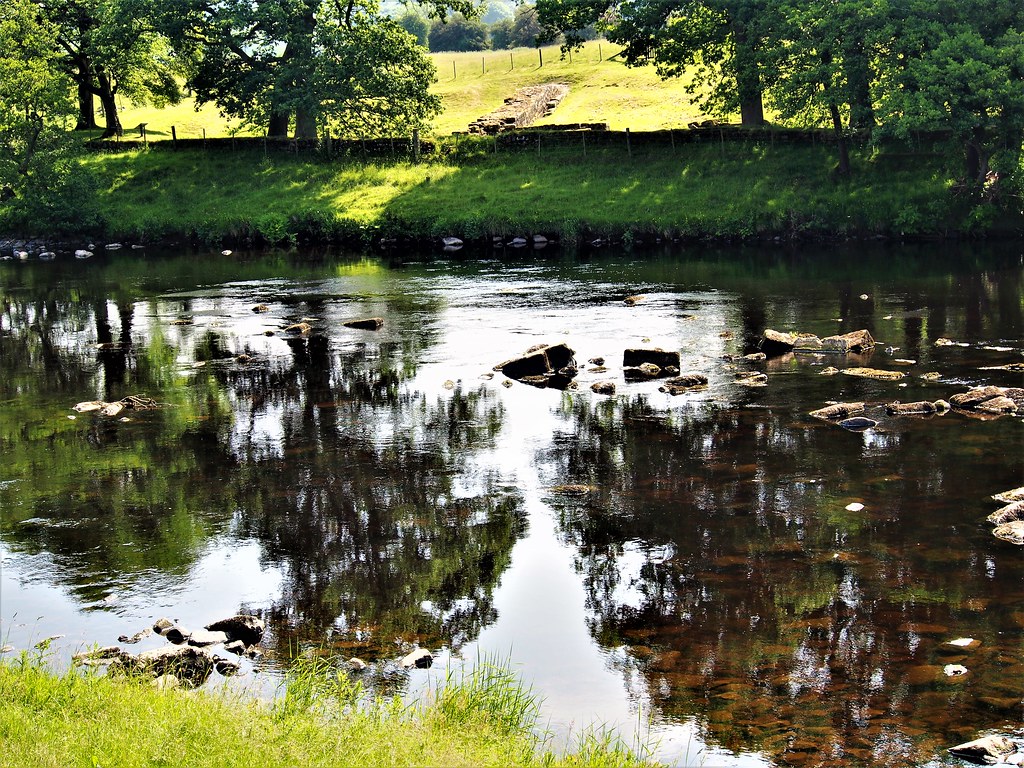 Location of bridge
Location of bridge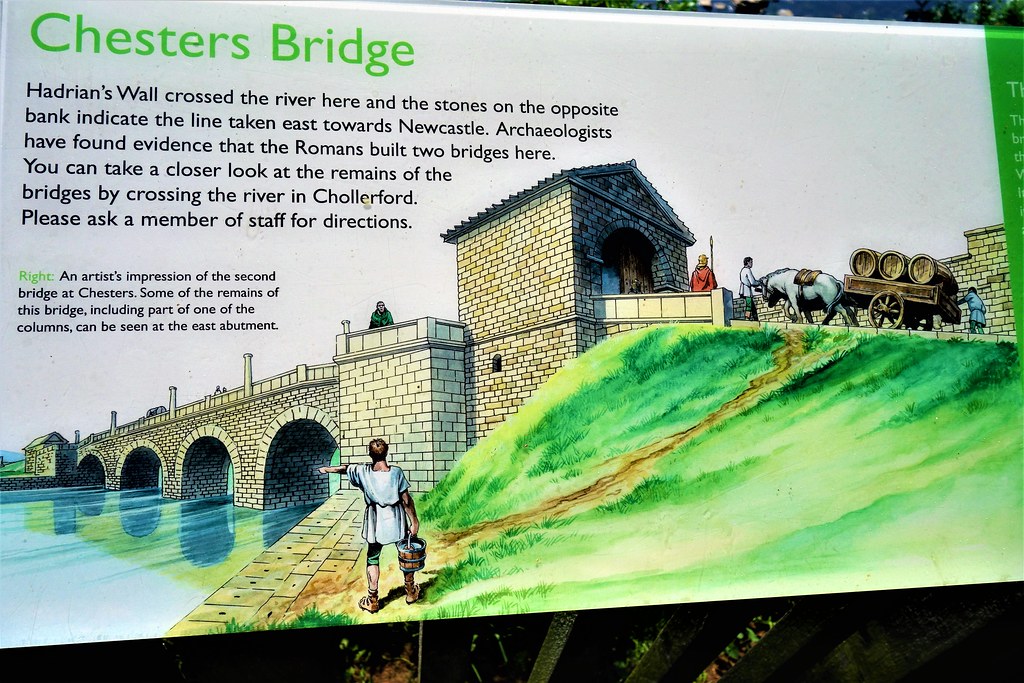 Bridge over North Tyne
Bridge over North Tyne- The site includes an excellent museum which has been in operation for over 100 years and holds many finds from Chesters and other forts on Hadrian’s Wall.
- There is no evidence of continued occupation of the site following collapse of Roman power in the early 5th century.
Housesteads Roman Fort
Next to Housesteads Roman Fort on Hadrian’s Wall.
Housesteads is located on a ridge known as the Whin Sill escarpment about 25 miles east of Carlisle which itself is on the line of the Wall. Access entails a 10 minute walk up an incline.
It is believed the Roman name for the fort was Vercovicium.
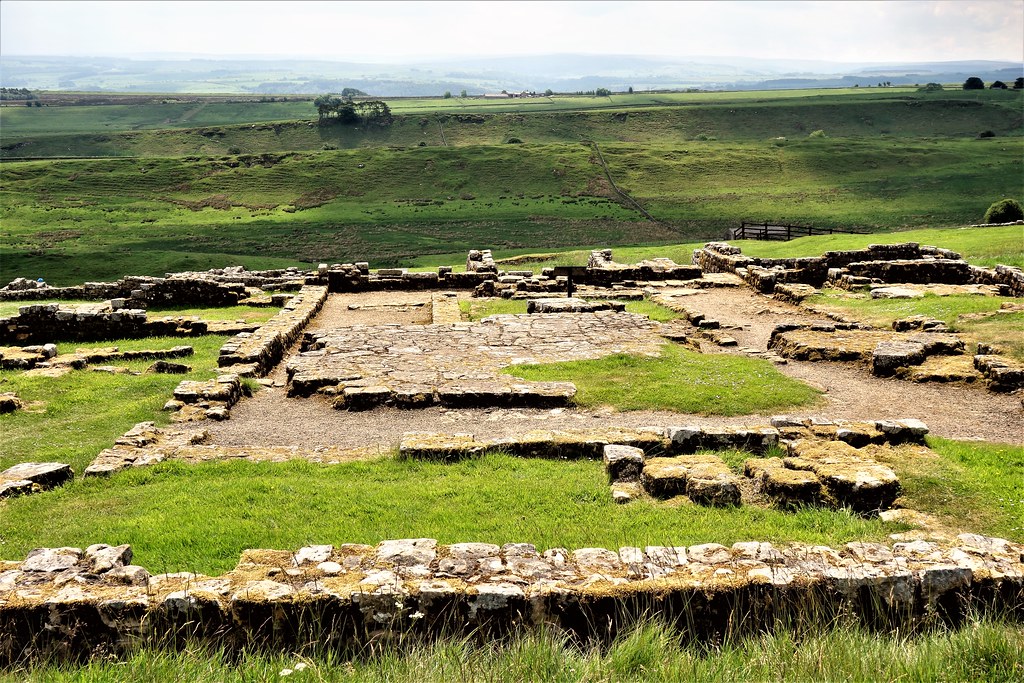 View south from Housesteads Roman Fort
View south from Housesteads Roman FortSummary information on Housesteads as follows:
- One of twelve permanent forts built by Hadrian on the Wall and one of the few examples of a complete Roman Fort in Britain.
- The site extends to five acres and is strategically situated on what was the northern edge of the Roman Empire, facing enemy territory to the North.
- Constructed around AD 124 but subject to various changes over the succeeding centuries through to departure of the Romans in AD 410.
- Within the Fort’s curtain walls were four imposing gates facing North, South, East and West plus interval towers.
- Within the confines of the Fort were standard buildings: H.Q., Commandant’s House, Barracks, Granaries, Hospital and Latrines. Just outside the South Gate can be viewed remains of a civilian settlement known as a Vicus.
- The Fort was home to a unit (cohort) of auxiliary soldiers, comprising infantry and cavalry,from what is now known as Belgium and spoke a Germanic language. This unit was known as the First Cohort of Tungrians (Cohors Tungrorum) and totalled about 800 men.
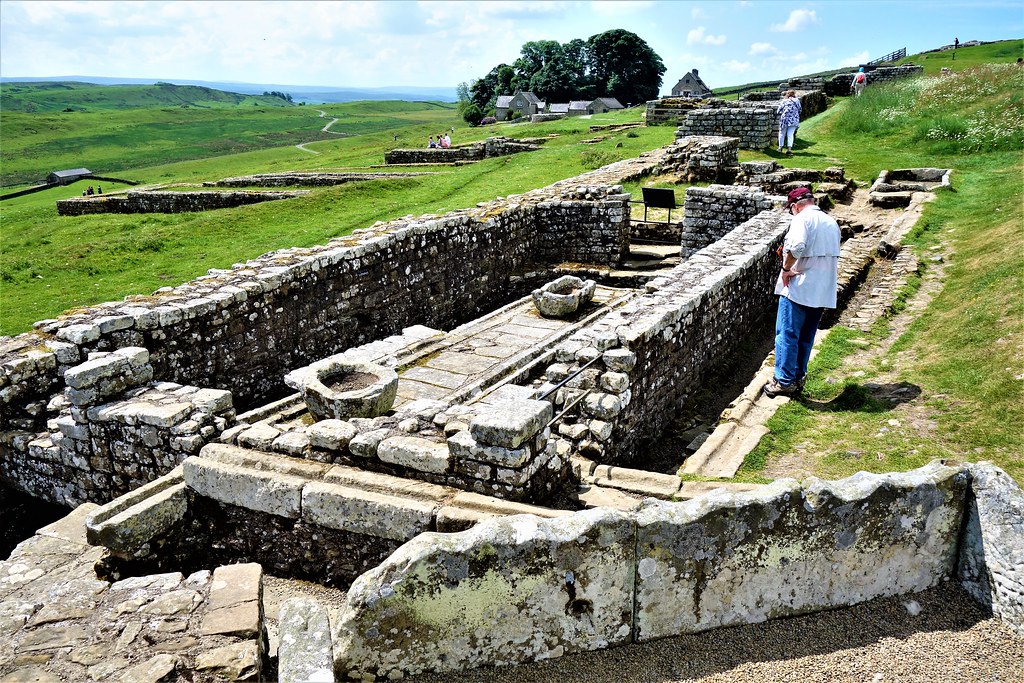 Latrines at Housesteads Roman Fort
Latrines at Housesteads Roman Fort Granaries at Housesteads Roman Fort.
Granaries at Housesteads Roman Fort.Durham Cathedral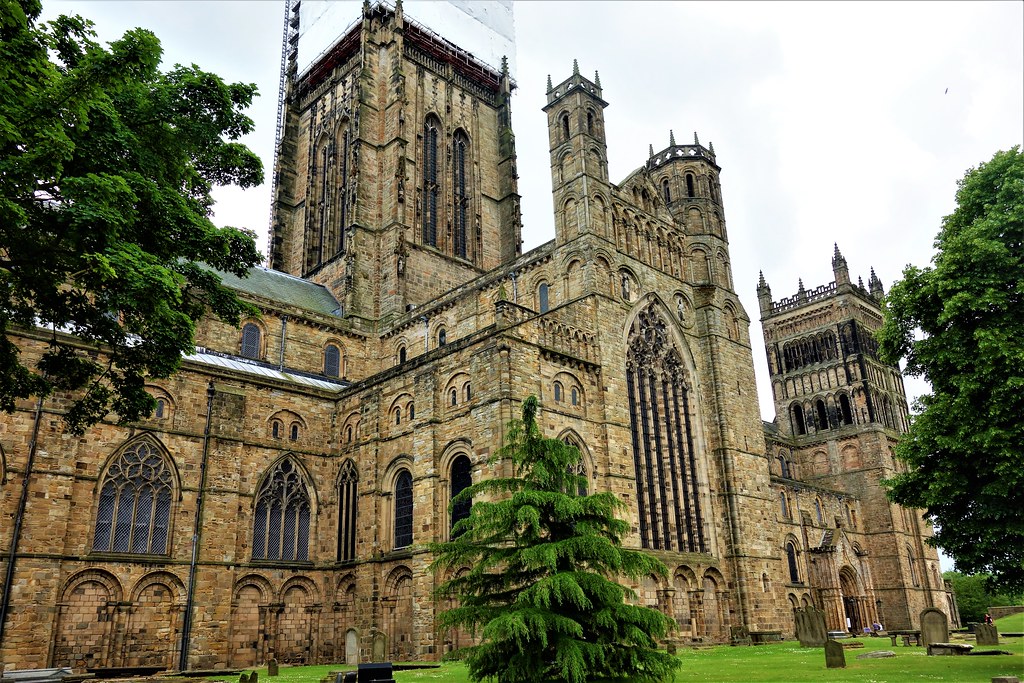 Durham Cathedral
Durham Cathedral
Finally, to Durham Cathedral to admire a stunning piece of architecture, which is in the top rank of church architecture in Europe. Unfortunately, photography of the interior is heavily restricted and hence images are restricted to exterior views.
- Founded by Bishop Carileph 1081-1096).
- Constructed over a period of just 40 years. Apart from matters spiritual it was probably intended as a statement of Norman power and prestige following the 1066 invasion.
- Most of the Cathedral is built in the Norman or Romanesque style. The Chapel of the Nine Alters was completed in the Gothic style between 1242 and 1280.
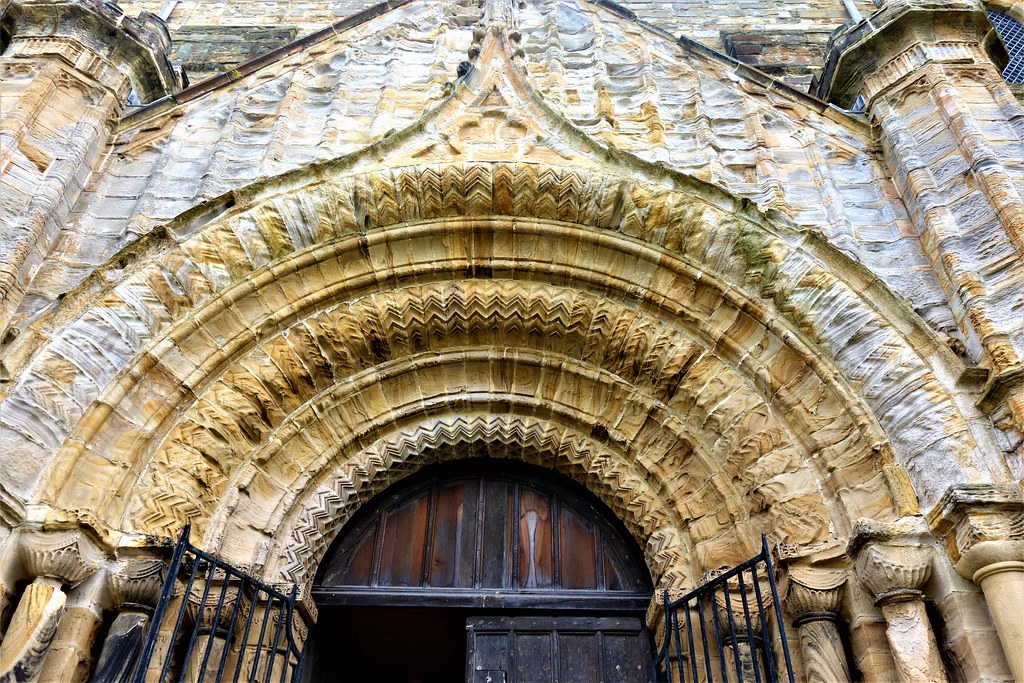 Norman entrance arch
Norman entrance arch- The Nave, Quire and transepts were built between 1093 and 1133. To this structure was added:
- The Galilee Chapel in 1175
- The two western towers between 1217 and 1226.
- Until 1539 the Cathedral was also the church of the Benedictine Monastery.
- The clarity and quality of the interior chevrons and carvings combined with the rose window at the eastern end of the interior are awe-inspiring.
- From an engineering perspective, the nave displays how the medieval masons produced a ground breaking solution to the challenge of erecting a stone vault across such a huge space. A combination of pointed arches and diagonal ribs enabled the nave to be constructed entirely of stone.
- Inside there are two important burials:
- St Cuthbert’s Shrine. This saint died in 687 after a life on Holy Island (Lindisfarne). The body was brought to Durham in AD 995 and deposited in an Anglo-Saxon church.
- Tomb of the Venerable Bede. Bede is famous for authoring The History of the English Church and People. He died in 735 AD with his bones brought to Durham in 1022 AD.
Spiritual matters apart, Durham Cathedral is a wonderful manifestation of English heritage combining architecture, design, power and important relics.
Interior of Durham Cathedral
Finally, we returned to our lodgings in Hexham.
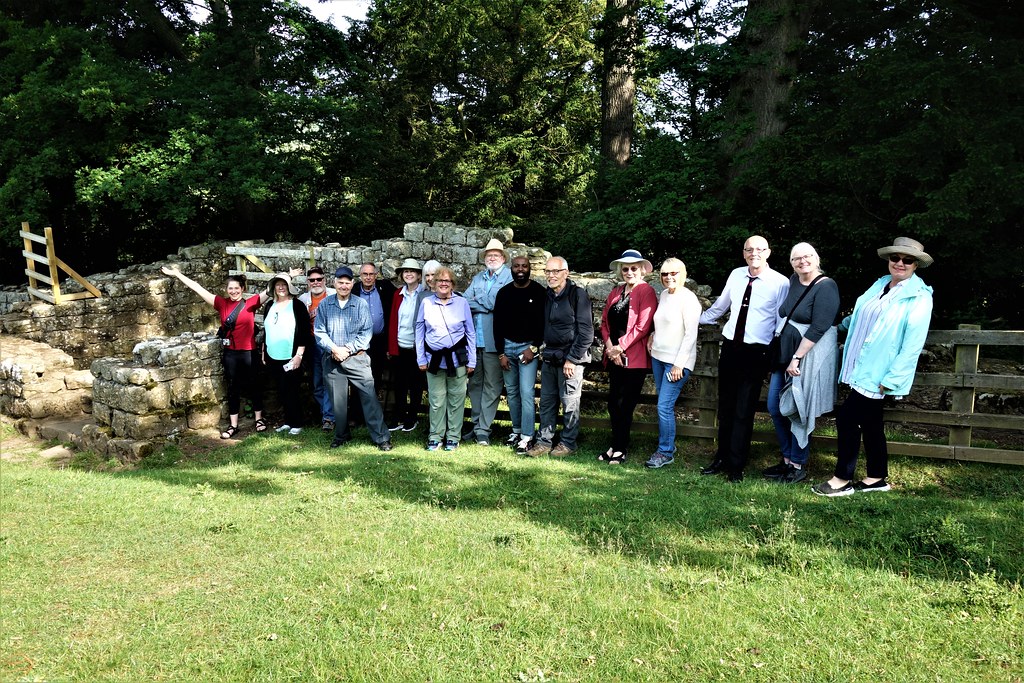
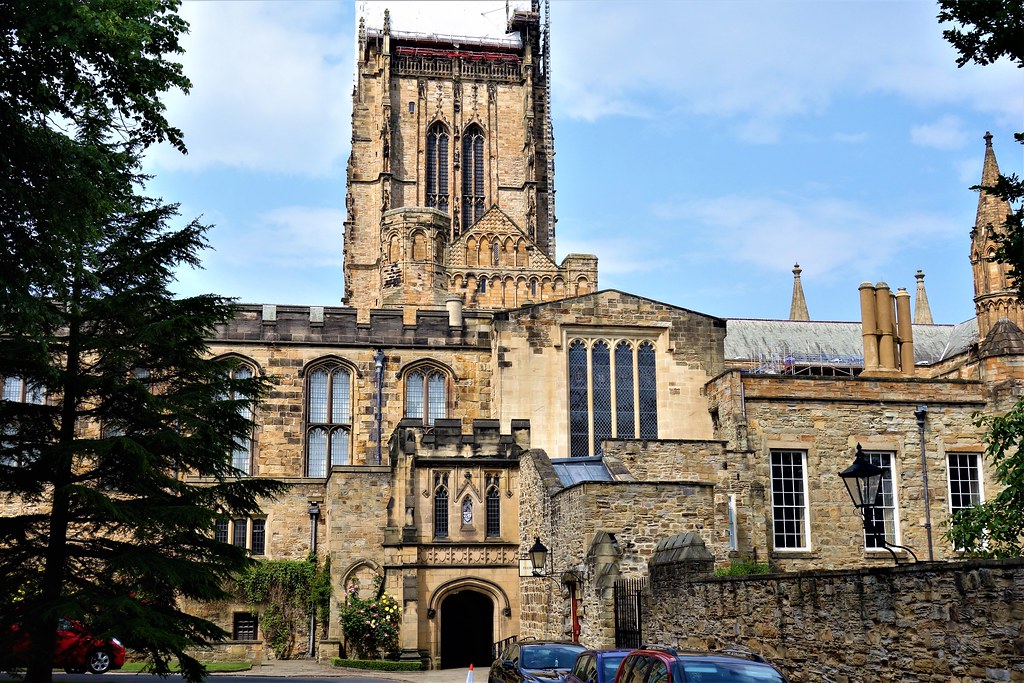


Comments
Post a Comment